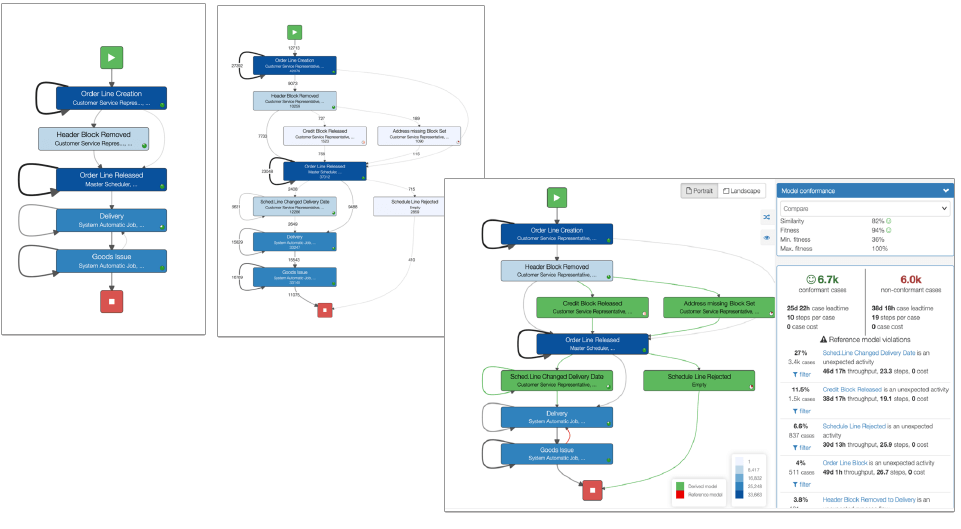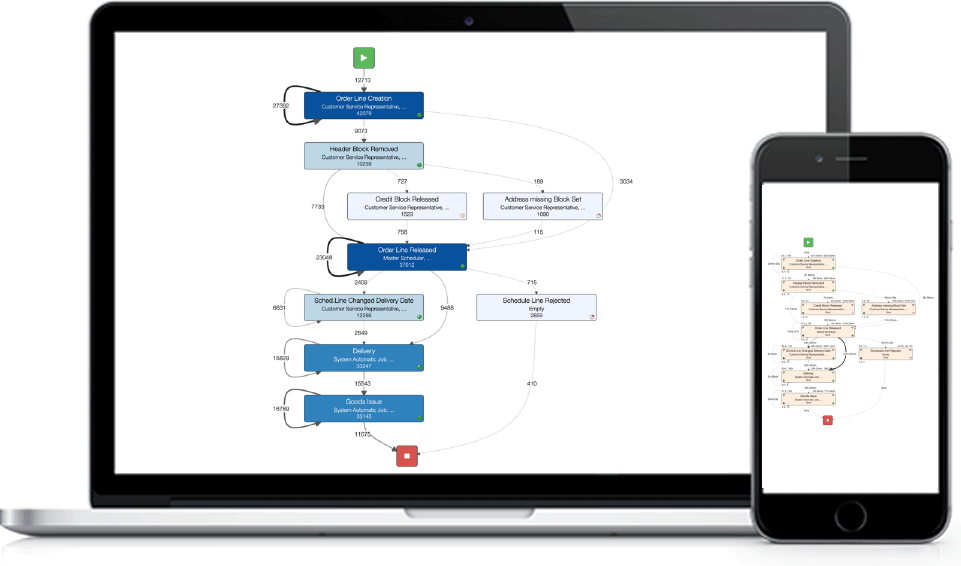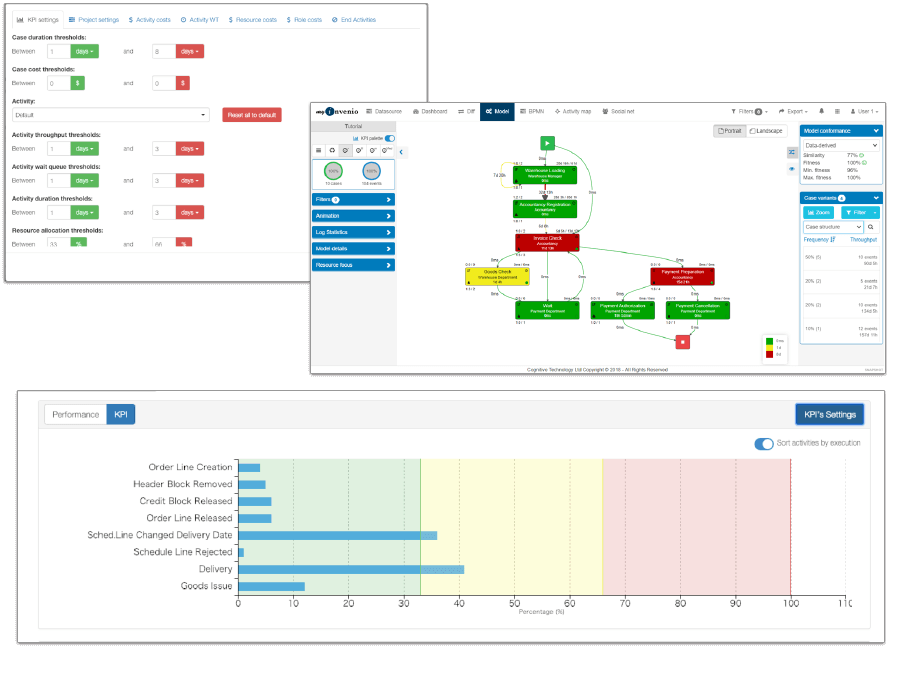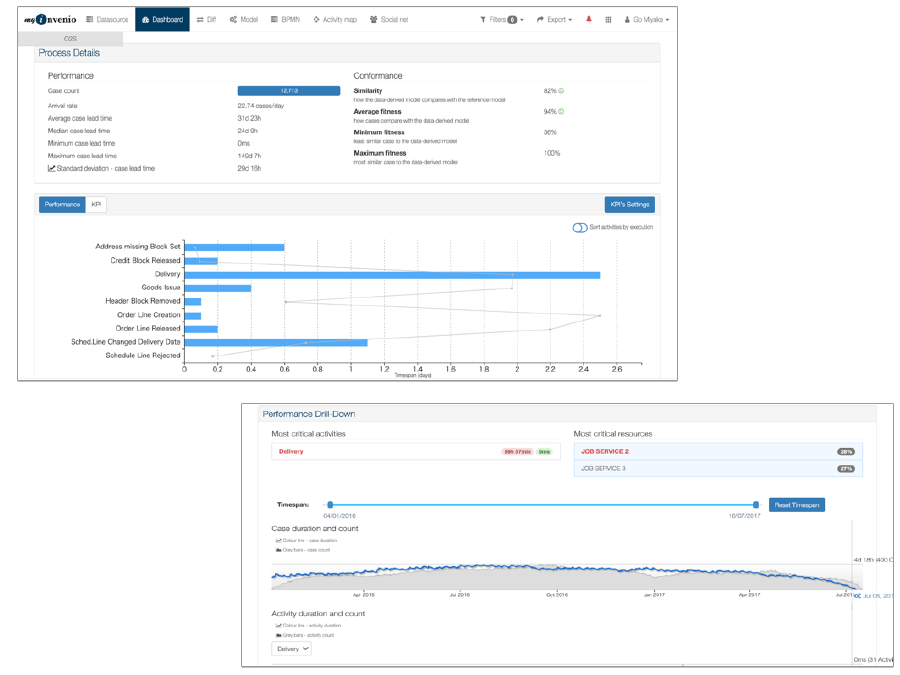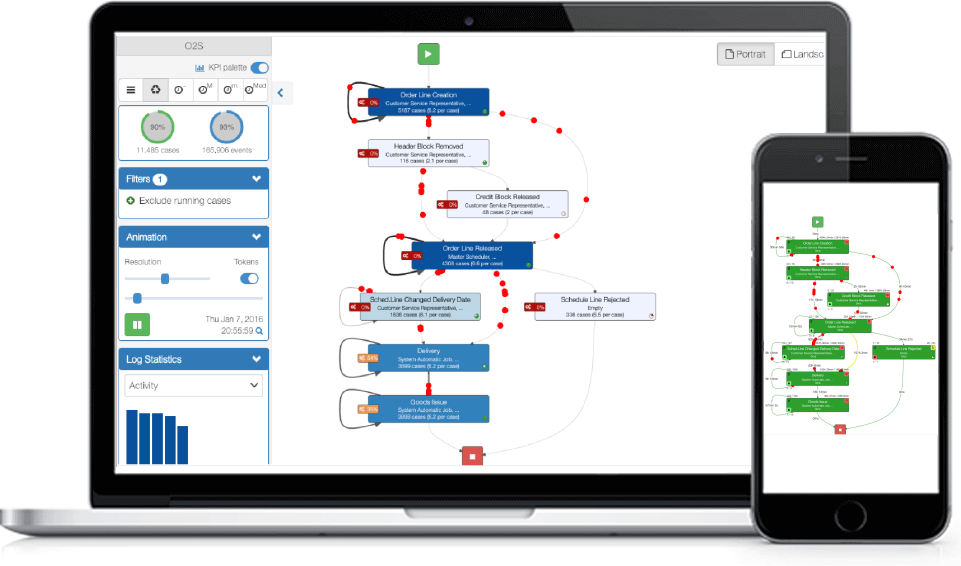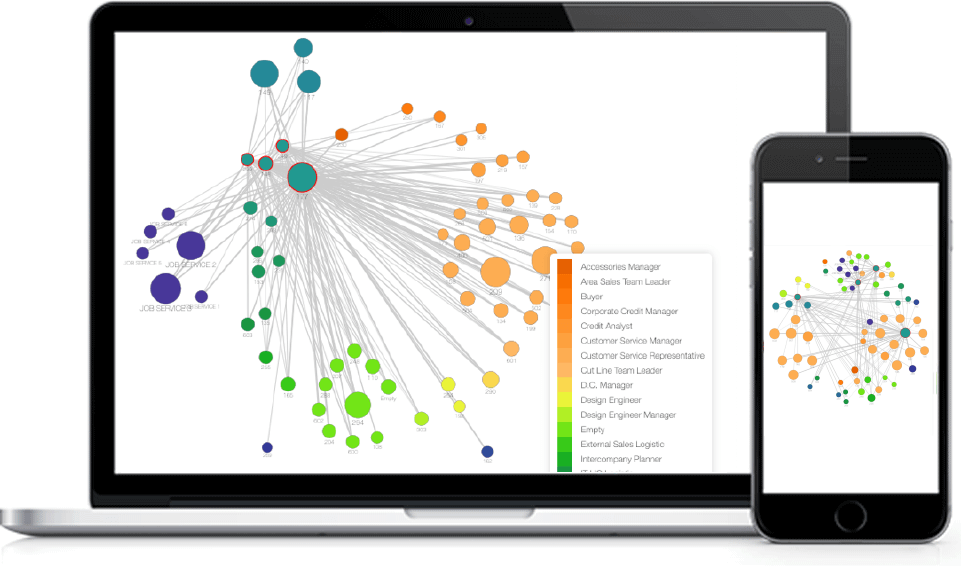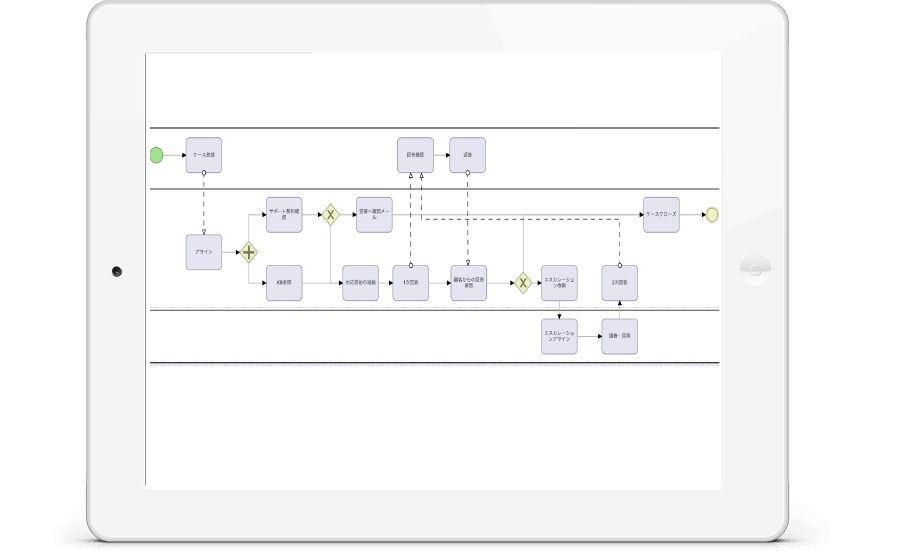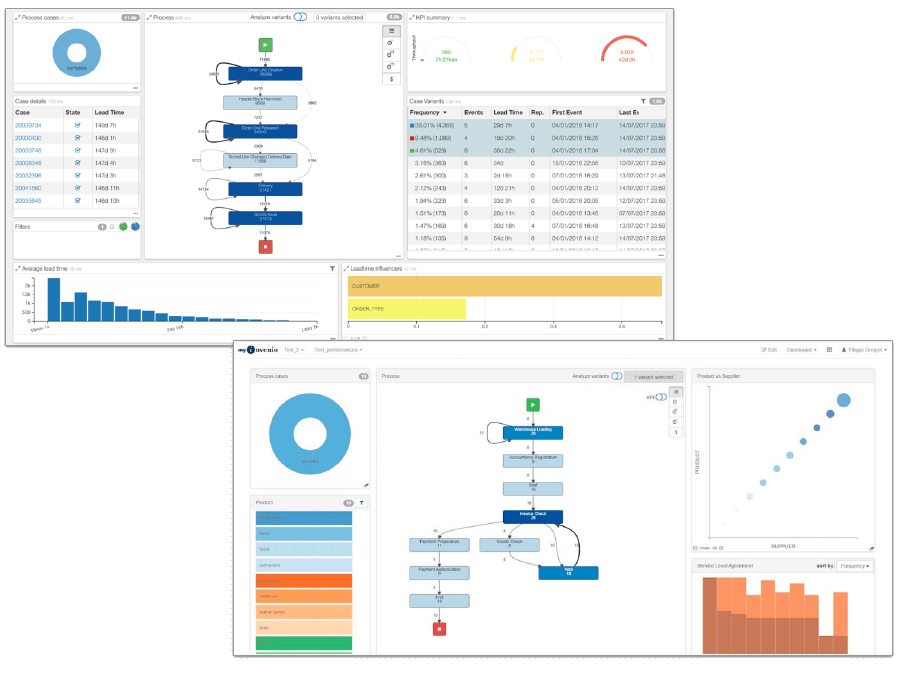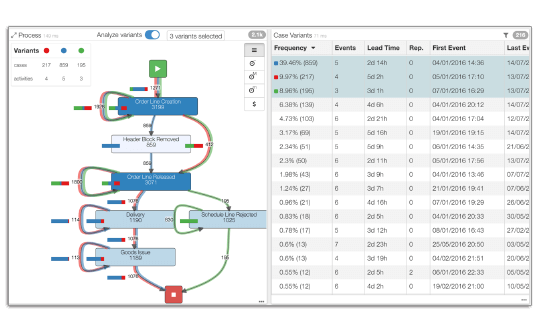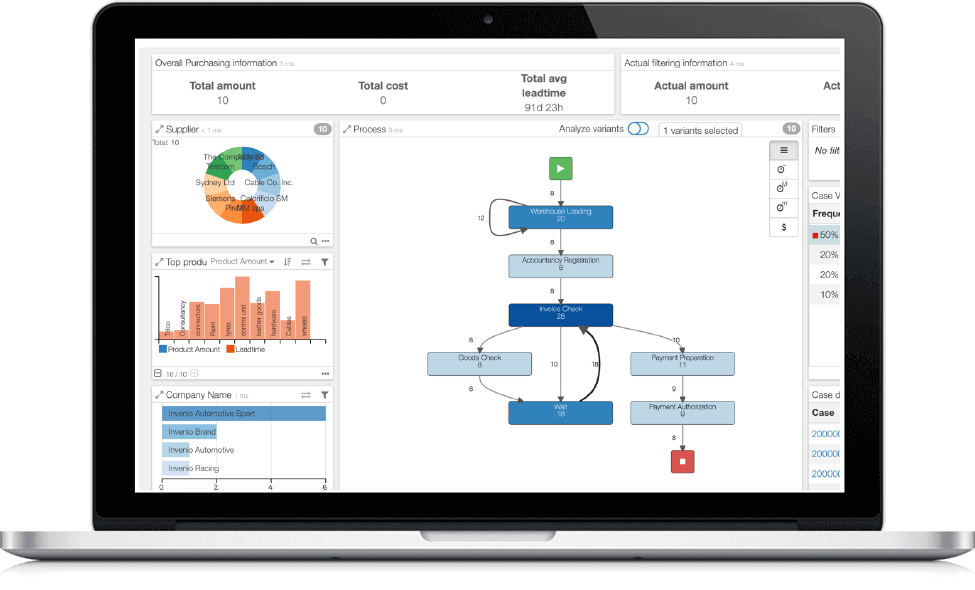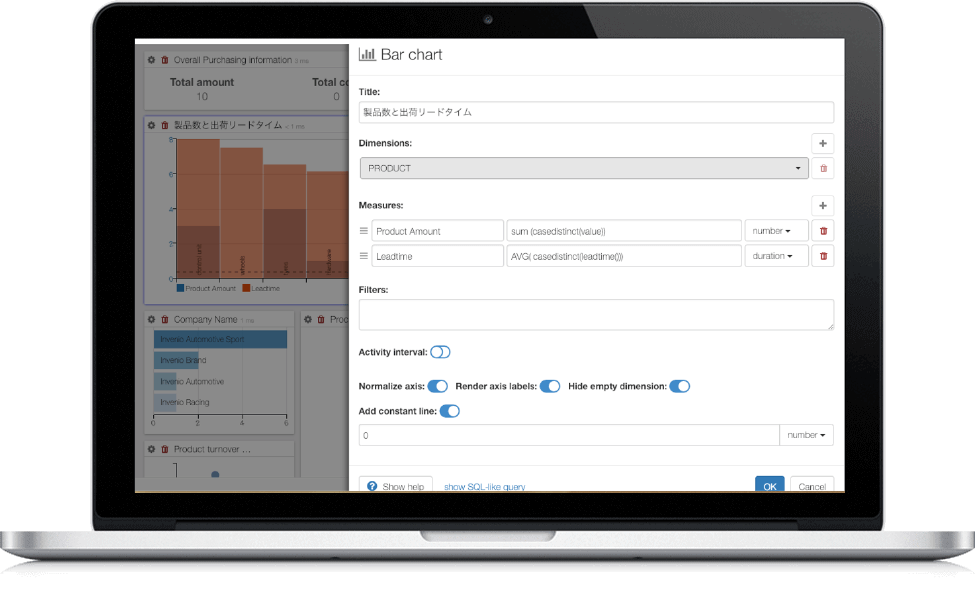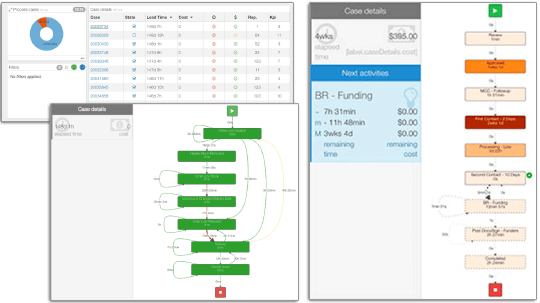Standard Process Compliance Check (conformance inspection)
It compares the predefined standard process (to-be) with the current process (as-is) obtained from log files, visualizes the deviations, and calculates the deviation rate as data. By visualizing unexpected business processes, the number of reprocesses, and the business history of unexpected people, it is possible to understand the compliance level and the penetration of internal business standardization.
